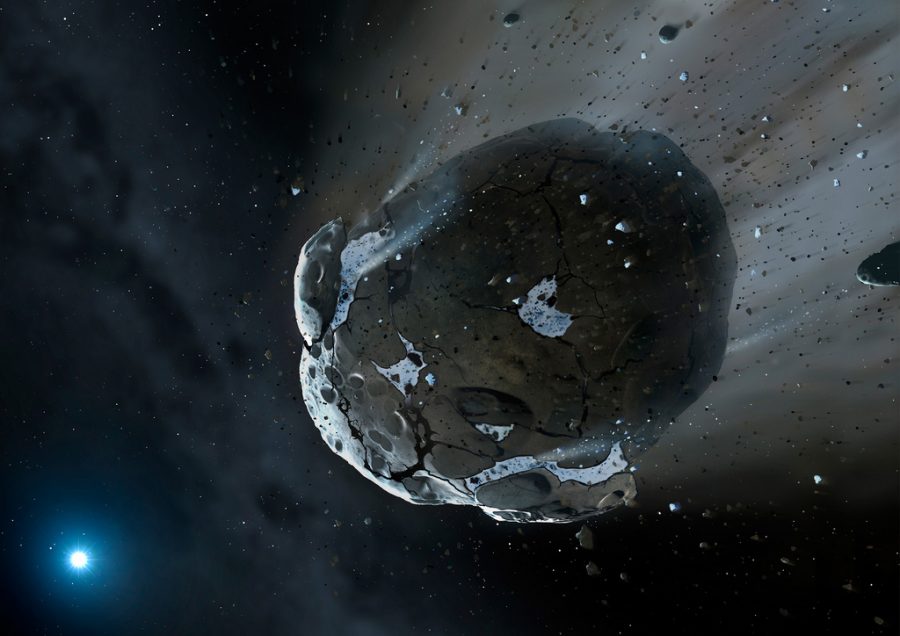Colossal Collision
NASA launched a probe , OSIRIS-REx, on September 8 to fly a 7-year mission to collect and analyze samples from a potentially dangerous asteroid that could one day collide with Earth.
The potentially dangerous asteroid is named Bennu; after an Egyptian mythological bird. Measuring in around 1,650 feet, scientists say it is unlikely to be a planet killer should its path be intersected by Earth; though it certainly could destroy a large city.
Its devastating impact could possibly cause extinction, but Bennu’s impact relies on multiple factors to account for, ranging from its impact velocity to where it collides with Earth, and even the composition of the asteroid itself.
One large factor of whether Bennu will even smash into Earth or not is its gravitational attraction to the larger spheres of sediment that it passes by with each orbit. Bennu enters Earth’s orbit every 6 years and each year it continuously gets closer due to the gravitational force of other planets in our solar system pushing it into Earth’s neighborhood. Because of this, in 2135, it is possible, however highly unlikely, that the asteroid could pass through a special path-altering “keyhole” that would send it hurling in the direction of Earth. These “keyholes” create a vast overall uncertainty plane which has many different keyholes. Different keyholes can lead to different outcomes, from Bennu missing earth completely to a disastrous collision depending on factors that are constantly changing in and around our universe.
Despite this, the mission that NASA hopes to accomplish has next to nothing to do with the implausible (.037 % chance to be exact) collision and more to do with learning more about the asteroid. With their probe, Osiris-REx, NASA scientists hope to gain a greater understanding of the asteroid’s orbit and to help prevent future close calls.
The information and samples taken from Bennu will be used to help them figure out more of the uncertainties surrounding the cold ball of death. The details of Osiris-REx would help scientists refine their original odds by refining their understanding of Bennu’s orbital pattern. Dante Lauretta – a professor of planetary science and Cosmochemistry at University of Arizona – said, “Our uncertainties will shrink, so that will allow us to recalculate the impact probability.”
Osiris-REx’s mission involves the probe gathering 2.1 ounces of surface sediment and spending 2 years in the NEO observing the asteroid. The NEO (Near Earth Objects) are comets and asteroids that have been pulled by the gravitational attraction of nearby planets into orbits that allow them to enter the Earth’s orbital sphere. Once it returns to Earth’s orbit, the scientists will examine and analyze the material returned and information the probe gathered within its 2 years while studying Bennu.
Osiris-Rex is expected to return by 2035, whereas Bennu could collide with earth sometime between 2175-2199. Where, hopefully, the information gathered will help us to greater understand the massive floating pieces of rock and hovering gasses that surround us and make up our universe.

Hello! My name is Katlyn Blacksten, or "Kat" to those who know me. The girls Varsity Basketball team is to blame for that because when I first tried out,...









Robert Corl • Oct 18, 2016 at 12:58 pm
This is extremely fascinating! Even though this event would likely never occur and is hundreds of years in the future, it is interesting to see the steps that scientists are taking to gain more knowledge on the universe around us.